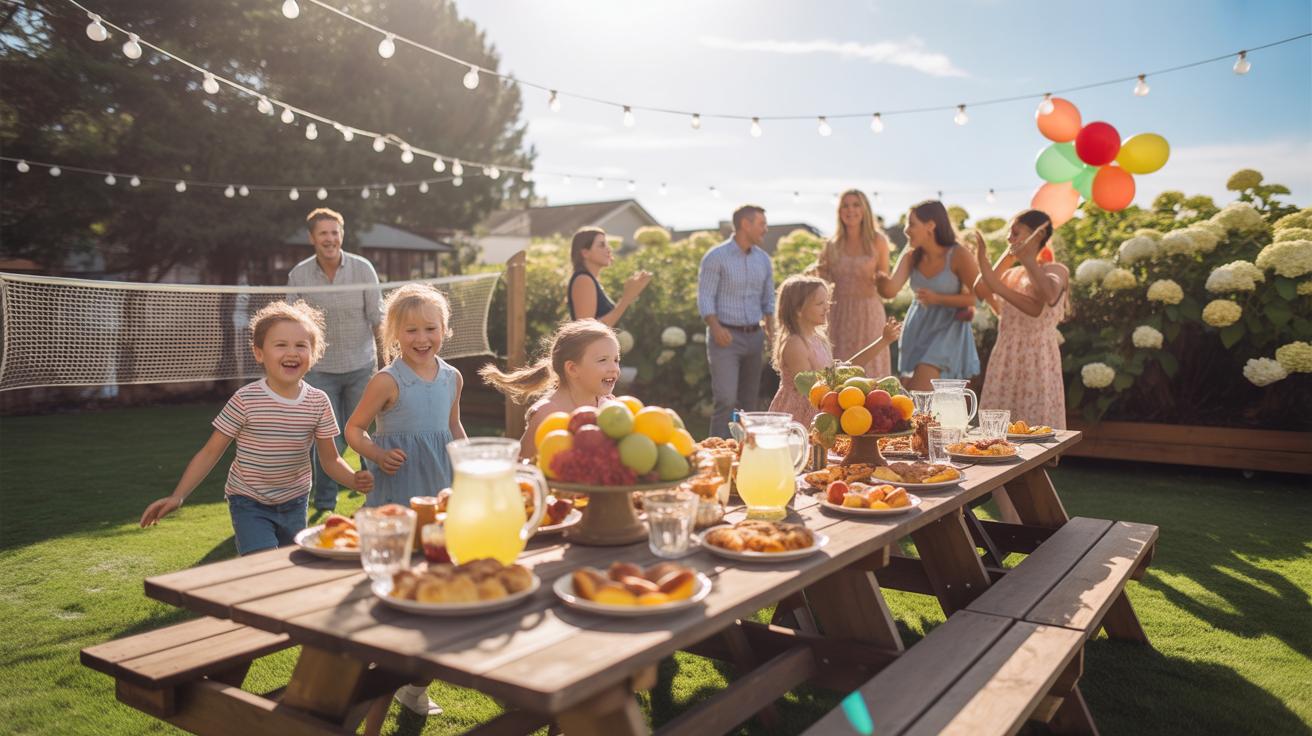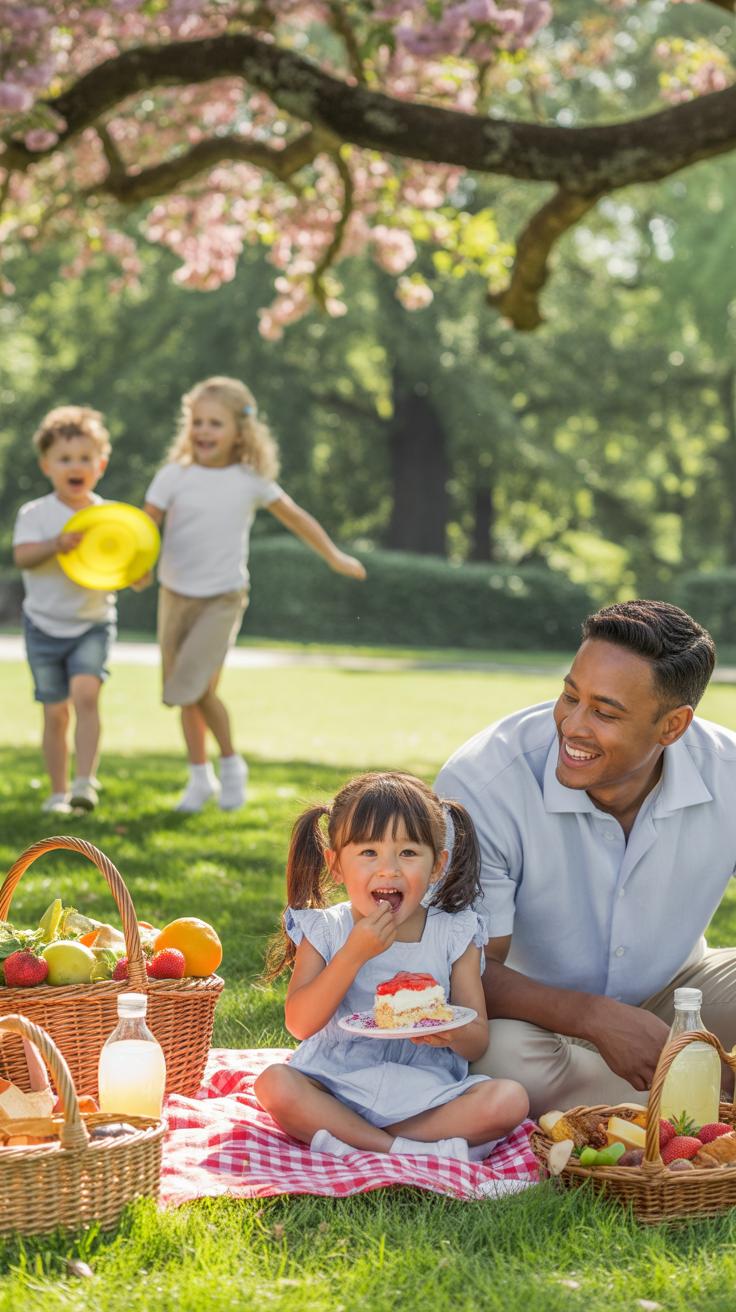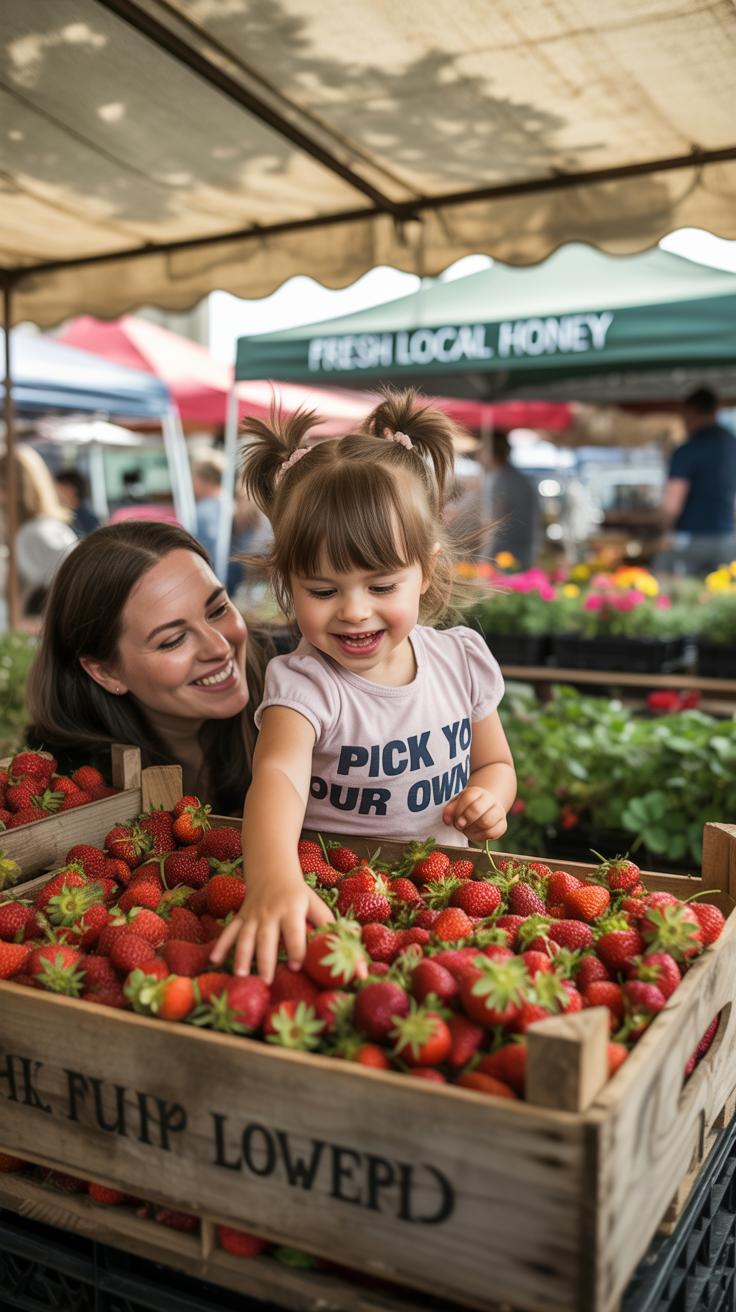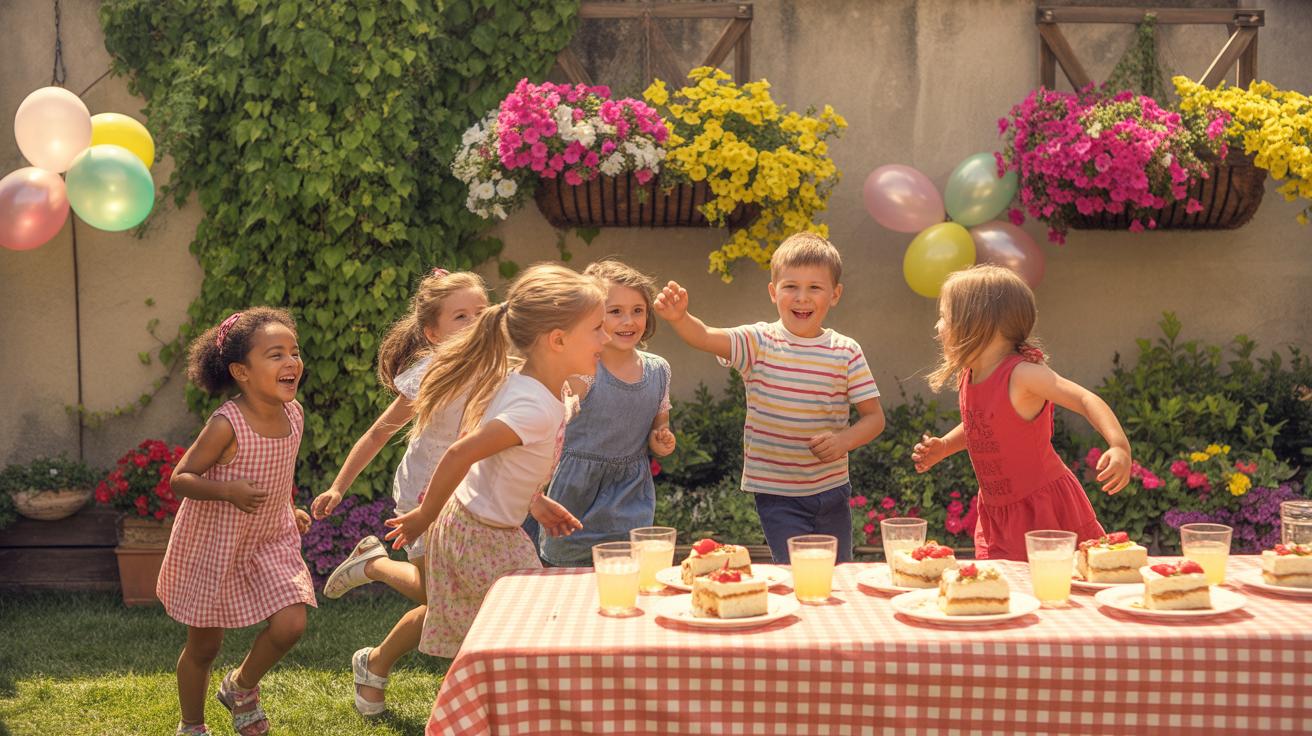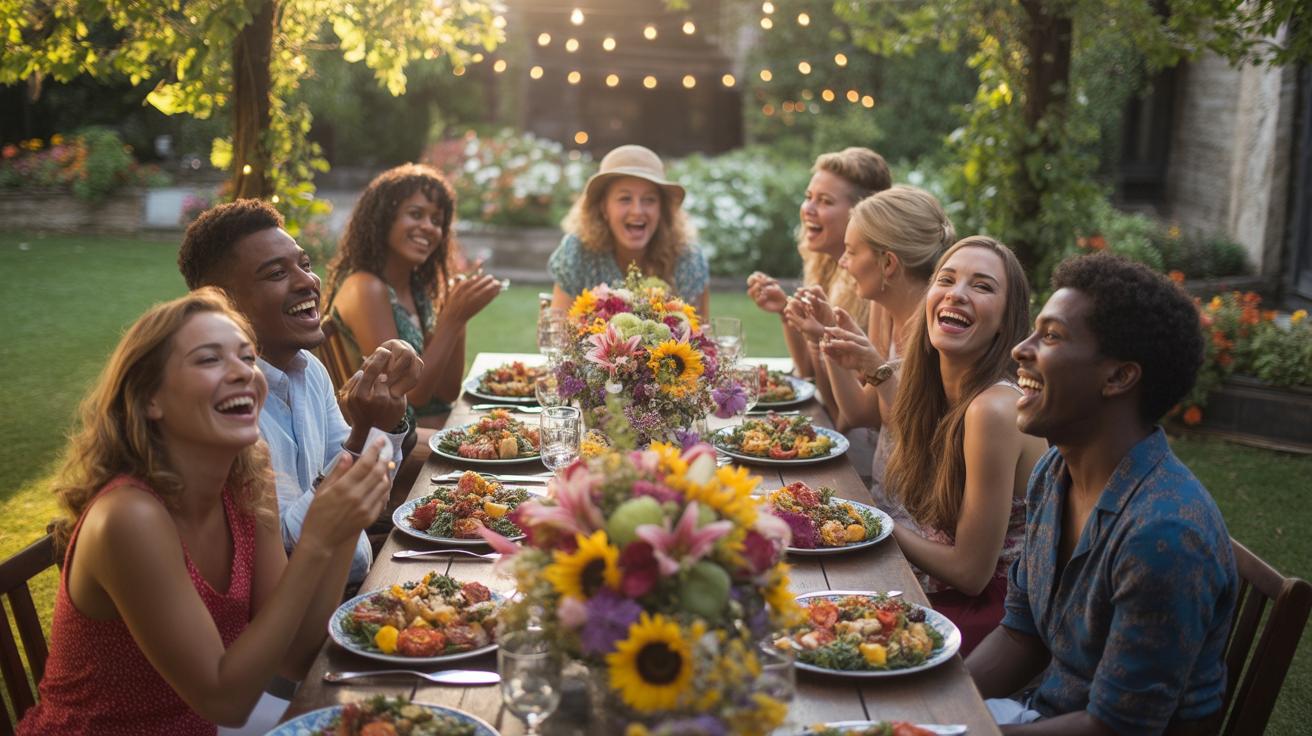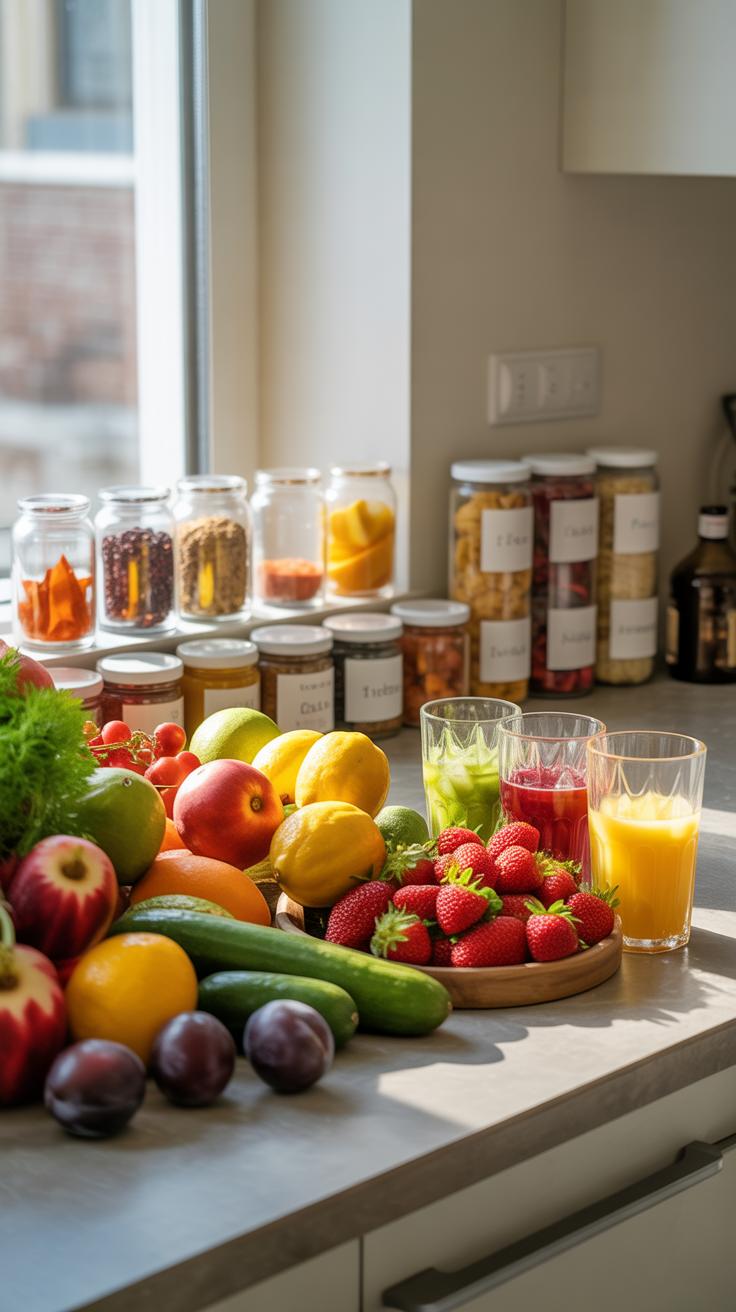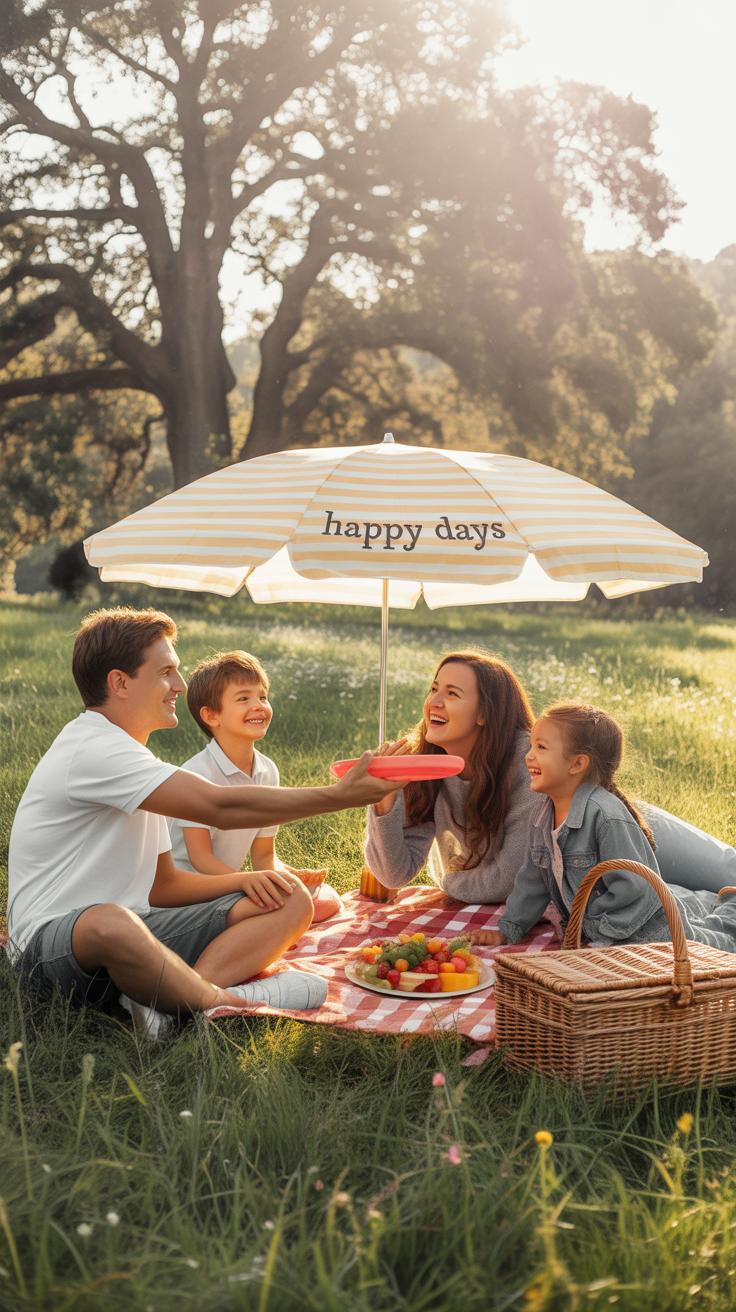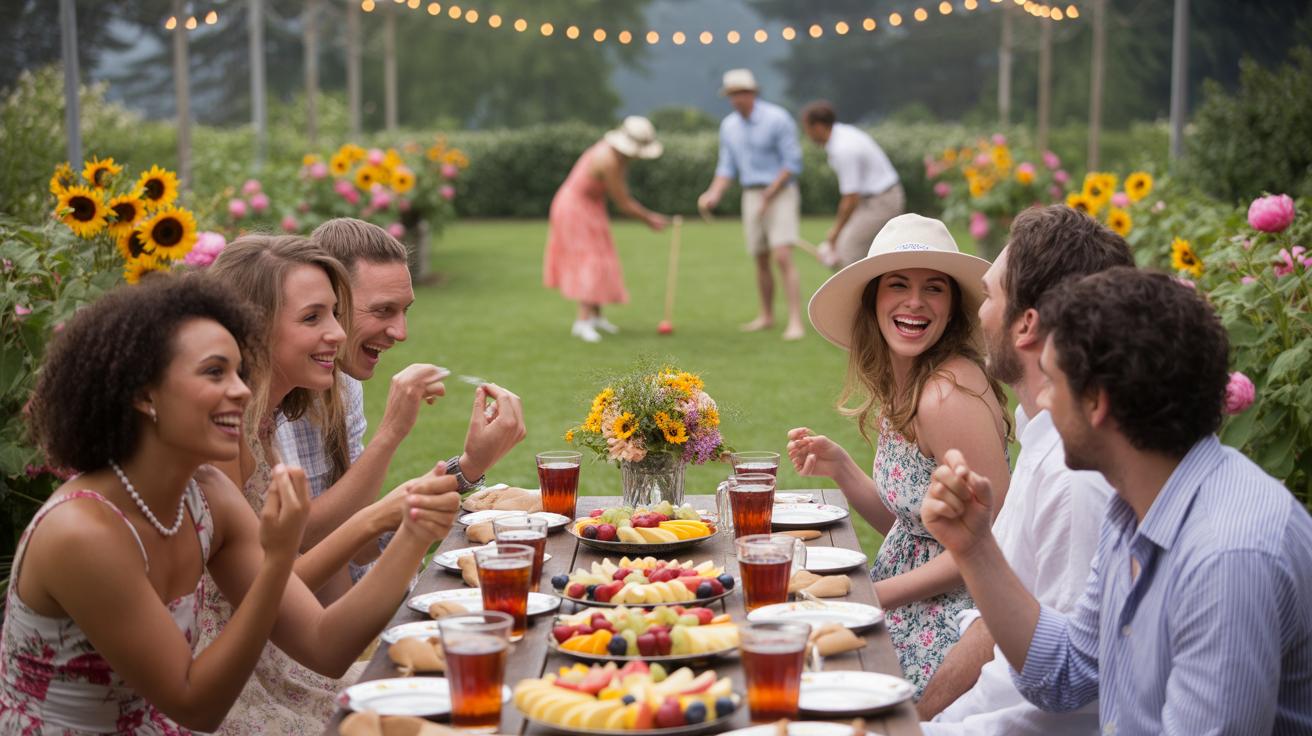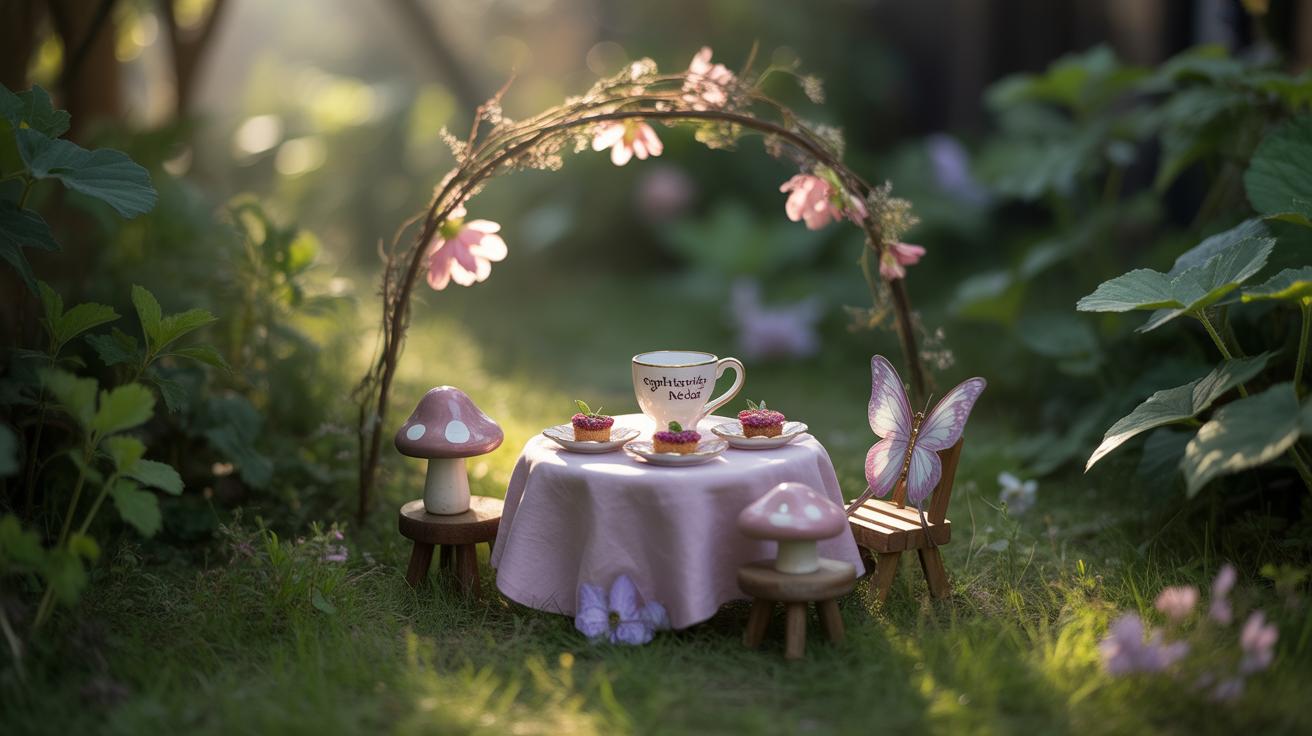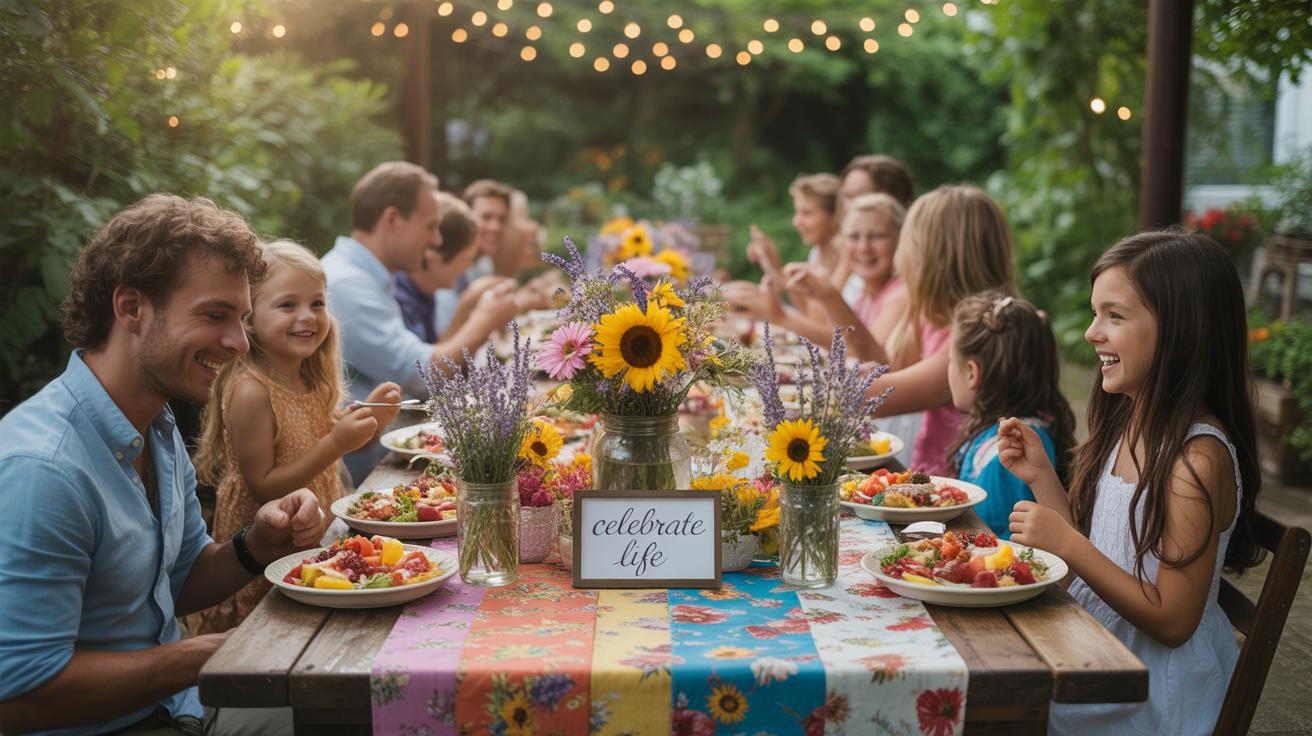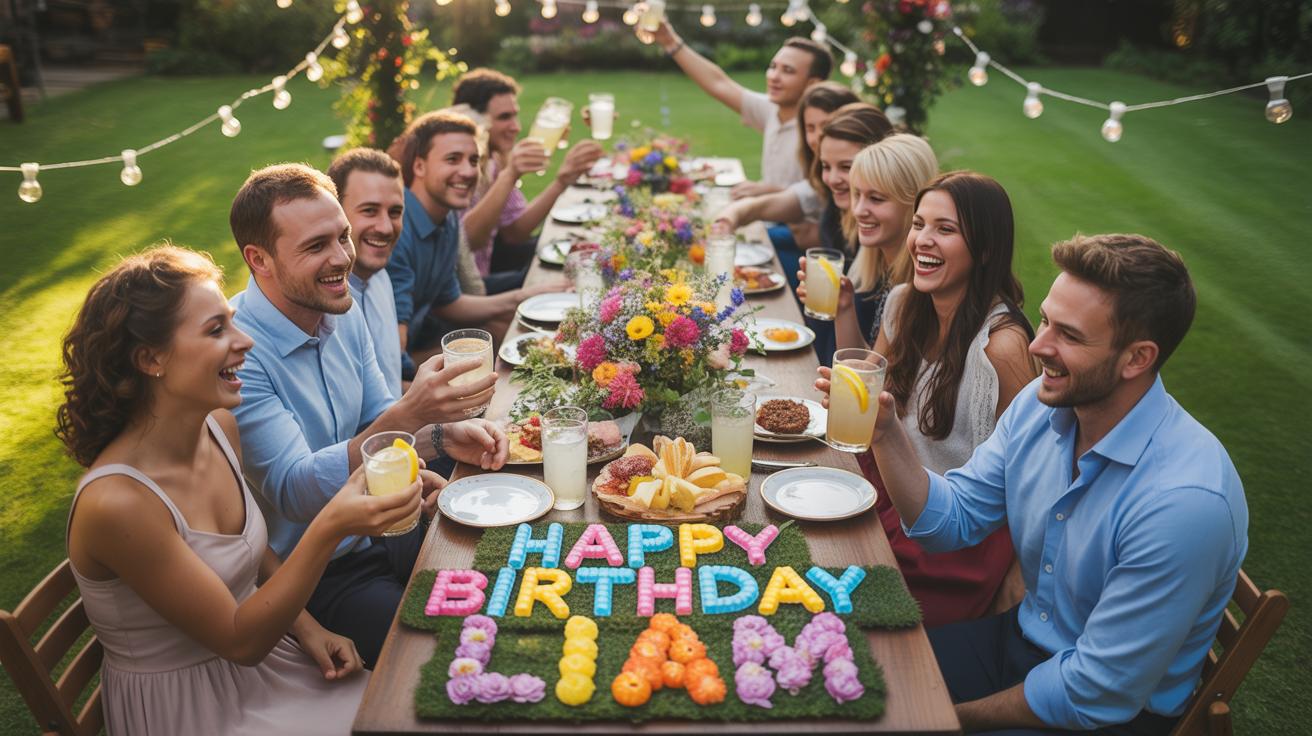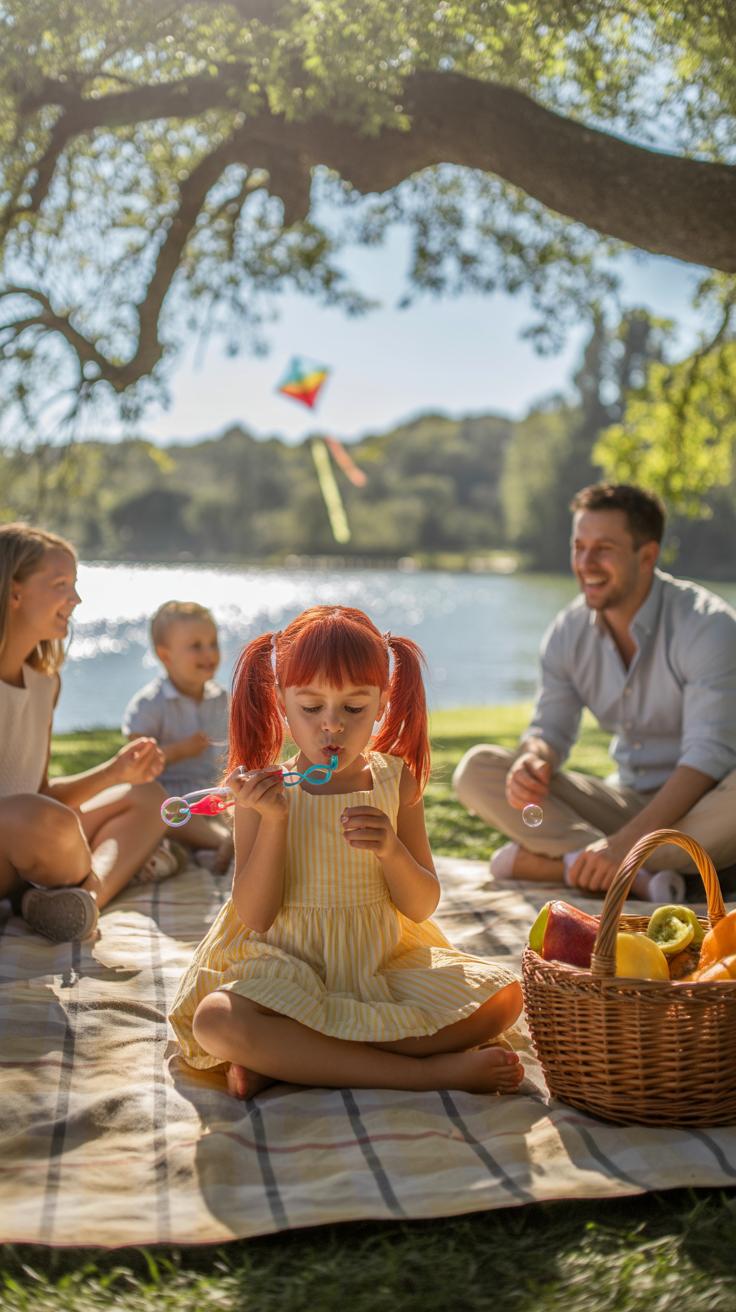Introduction
Planning an outdoor party can be a great way to enjoy the fresh air and nature while gathering friends and family. Outdoor events offer a relaxed atmosphere that indoor spaces often lack. With some preparation, you can arrange a memorable event that everyone will enjoy.
This article will walk you through the important aspects of hosting an outdoor party. From picking the best location to decorating, food choices, and managing unexpected weather, you will find practical tips to make your event smooth and fun. Let’s explore how to plan your next outdoor gathering with ease.
Best Location Choices
Choosing the right spot for your outdoor party can feel a bit tricky, but it really comes down to a few key things. Space is probably the biggest factor. You want enough room for everyone to move around comfortably—both guests and any activities you have planned. Think about your guest list first. Is it a small group that fits well in a backyard? Or do you need a bigger place like a park or even a beach? I once planned a picnic at a local park that was huge, but half the area was off-limits, which made things a bit cramped. So, knowing the usable space is crucial.
Accessibility matters more than you might guess. You want a place where people can get in and out easily—good parking or public transport nearby definitely helps. I’ve seen party spots without restrooms or shelter, and it can quickly become uncomfortable when nature doesn’t cooperate. Shade or covers are almost a must, especially if your event runs long or the weather turns. Restrooms might sound basic, but they impact comfort a lot. Without them, guests may leave earlier than expected.
Finally, the scenery can add something special, but it’s not the only thing to focus on. A simple backyard full of familiar memories can feel more welcoming than a perfect view no one can access easily. So, when picking your location, balance the practical parts—space, access, bathrooms, shelters—with how the place feels to you and your group. It’s not always obvious at first, but thinking through these details makes a noticeable difference.
Setting a Theme
Why Themes Matter
Choosing a theme can really shape the feel of your outdoor party. It gives you a kind of roadmap—helping you decide what decorations go where, what food to prepare, and which activities to offer. Without a theme, things might just feel random, or even a bit chaotic. But with one, you create a shared experience that guests can latch onto. It sets expectations and builds anticipation, making the event feel more planned and special. I’ve seen parties without much direction that end up lacking energy. On the other hand, a simple theme can spark conversations and keep everyone involved, even if it’s just through something small, like matching colors or a particular style.
Easy Theme Ideas
If you’re hunting for something straightforward, a picnic theme is a solid choice. Think checkered blankets, wicker baskets, and finger foods like sandwiches and fruit. Guests can even dress casually, maybe with sun hats or comfy sandals. Another option is a tropical vibe—bright colors, paper leis, beach balls, and fruity drinks with little umbrellas. It invites a bit of playfulness without much hassle. Rustic is also nice, especially if your venue has natural charm. Use burlap tablecloths, mason jars with candles or flowers, and ask guests to opt for casual country-style attire.
What kind of atmosphere do you want? Something relaxed, festive, or maybe a bit quirky? Picking a theme not just guides the setup but kind of sets a tone everyone can follow, which makes your outdoor gathering easier to pull off and more memorable for all involved.
Preparing Invitations
When you’re planning an outdoor party, how you invite people matters more than you might expect. Invitations do more than just share info—they set the tone and build excitement. Clear details are key. Make sure you include the date and time upfront. Without that, no one can plan. The location should be precise too—maybe add landmarks or parking tips so guests don’t wander around confused. If you want a particular dress code, like casual or something weather-appropriate, say it clearly. And don’t forget the RSVP. You want to know who’s coming so you’re not caught off guard.
Choosing between digital and printed invites depends on your crowd and style. Digital invitations are easy and quick. You can email, text, or use apps like Evite. They handle RSVPs automatically, which is handy. On the other hand, printed invitations feel more personal—nice if your party has a special theme or you want to impress a bit. Sometimes, people might overlook emails, but a physical invite tends to catch attention. You could even combine the two: send a printed invite to close friends and a digital one to acquaintances.
For impact, keep your language straightforward but warm. Use bullet points or short sentences for the essentials to avoid confusion. Maybe add a little note about what to expect, like “bring a blanket” or “sunblock recommended.” Don’t forget to check the spelling; typos can make an invitation feel rushed. One time, I sent an invite without a time—it led to a few unexpected early arrivals and some awkward waiting. You live and learn, I guess.
Organizing Food and Drinks
When planning food for an outdoor party, keeping things simple usually works best. Think about foods that won’t spoil quickly or create a mess. Finger foods like mini sandwiches, wraps, or skewers often hit the spot—they’re easy to grab and don’t require utensils. Fresh fruits and crisp salads are good choices, too, since they stay refreshing and light in the open air. Some salads, though, can get soggy or wilt fast if not dressed properly; maybe keep the dressing separate until serving.
Storing food outdoors can be tricky. You might want to pack items in coolers or insulated bags, especially if you’re dealing with anything dairy-based or meats. It’s tempting to bring elaborate dishes, but think about how they’ll hold up outside. Presentation matters—simple platters lined with parchment or colorful serving trays can brighten the spread without fuss. Paper plates and napkins with some weight can prevent spills, even if they’re not fancy.
When it comes to drinks, easy access and keeping beverages cold are key. Large drink dispensers filled with iced tea or lemonade work well and encourage guests to help themselves. For sodas and bottled water, a cooler filled with ice is your best bet. Sometimes, I’ve noticed guests just go for whatever’s cold, so having a few varieties doesn’t hurt. Alcoholic options? Sure, but keep them limited and straightforward—a few beers or a simple cocktail mix rather than a full bar setup.
Do you lay out the drinks all together or spread them around? Sometimes scattering coolers around the area can prevent crowding, though it requires a bit more planning. Whether you use tubs, buckets, or coolers, making sure everything stays within reach without being in the way is worth considering. And of course, avoid glass containers if kids are around or if the ground is uneven.
Arranging Seating and Shade
Getting seating right outdoors can really make or break your party’s comfort. You want people to feel relaxed, not scrambling for a place to sit or awkwardly standing around. The size of your group, of course, plays a big part here.
If you’re expecting a smaller gathering—say under ten—spreading out a couple of picnic blankets can work fine. It creates an informal vibe, closer to the ground, good for chatting or lounging. But remember, not everyone’s going to want to sit on the grass, so having a few foldable chairs around is smart too. They’re easy to set up and move around as needed.
For medium-sized groups, benches or lightweight wooden seating offer a nice balance. They can encourage more structured conversation zones without feeling rigid. Sometimes, just grouping chairs in small circles works better than lining them up, especially if guests don’t all know each other.
In larger events, mixing seating styles helps. Folding chairs, picnic tables if you have them, and blankets scattered here and there. People can pick what feels right. It’s kind of like creating little islands of comfort.
Shade? That’s another crucial piece. You don’t want your guests roasting under the sun, which, let me tell you, can happen surprisingly fast. Think about umbrellas for smaller spaces—simple and effective. A few placed strategically create cozy pockets of shade.
If your event is bigger or longer, tents or pop-up canopies might be worth the effort. They offer more reliable shelter, especially if the sun moves or if a light breeze turns into a bit more. And don’t overlook nature’s own shade—big trees can save you a lot of hassle. Positioning seating underneath them can work well, assuming the ground there is dry and not too uneven.
Have you thought about the time of day? Sun angles change, so keep in mind where shadows will fall. That can make even a basic setup feel surprisingly thoughtful.
Planning Entertainment
Keeping guests entertained at an outdoor party can be simple—if you think it through a bit. Music sets the tone, but picking the right type and volume isn’t always straightforward. You might want something light and upbeat for the afternoon, maybe some acoustic or soft pop that blends with outdoor noises rather than overpowering them. As the party progresses into the evening, shifting to a slightly livelier playlist can lift energy without making conversation impossible.
Volume matters here. It needs to fill the space without blasting. Ever been to a party where the music drowns out all talking or makes people shout? That’s the trap to avoid. You want your music audible but still comfortable—perhaps just under the level where guests have to raise their voices. Bluetooth speakers work well, but consider their placement carefully to spread sound evenly.
Games bring a casual, joyful vibe. For mixed-age groups, simple games work best:
- Cornhole or bean bag toss: Easy to set up and accessible for most ages.
- Giant Jenga or Connect Four: These spark friendly competition without much fuss.
- Scavenger hunts: A little more involved, but fun for kids and adults if you tailor the clues.
- Frisbee or kicking a soccer ball: Great for active guests who want to move around.
Some guests may prefer just chatting, so make sure there are quieter spots, too, maybe nearby but separate enough from the active areas.
Interactive activities could also include DIY stations—like a build-your-own cocktail or mocktail bar, or a simple craft corner for kids if the crowd includes families. These keep people engaged without feeling forced.
What sort of activities do you think your guests would enjoy? Sometimes, just inviting friends or family to share their favorite games works surprisingly well. It gets everyone involved, and you might discover something new.
Decorations and Lighting
Simple Decoration Ideas
Decorating outdoors can feel tricky at first. You want something that looks festive but doesn’t demand hours or a big budget. Think about what’s already around you. For instance, a pot of flowers or some greenery can double as décor without extra cost. You might drape some colorful fabric or scarves over chairs or tables to add a splash of color.
Here are a few easy ideas that match common themes:
- For a rustic vibe, use mason jars filled with wildflowers or tea lights.
- If you’re going with something tropical, scatter shells or bananas leaves atop the table.
- String up paper fans or simple cutouts around trees or posts for a casual feel.
- Even balloons, when grouped thoughtfully, can brighten up the space without seeming childish.
It’s surprising how small touches can shift the atmosphere. Sometimes, less really is more—or at least, less is enough.
Outdoor Lighting Tips
As the sun sets, good lighting becomes crucial. It sets the mood and keeps things safe, but you don’t want anything too harsh or blinding. String lights are a go-to, and that’s for a reason. You can hang them along fences, trees, or even overhead if you have structures. They give off a warm glow that feels inviting.
If you want to mix things up, lanterns work well, especially those with candles or battery-powered LEDs. They add a bit of charm and can serve as centerpiece options too. Solar lights are another interesting option; they charge all day and come on automatically—it’s basically hassle-free.
Try combining different sources. Maybe string lights crossing above the area and lanterns resting on tables. It’s about layers of light, trust me. By the way, do you want a soft flicker, or just steady illumination? Choices like that subtly influence your party’s vibe.
Managing Weather Risks
When planning an outdoor party, weather can be your biggest unpredictable guest. You might check the forecast days ahead and feel confident, but then, suddenly, the sky changes. That’s why keeping an eye on weather updates right up to the event day is really useful. Weather apps, local news, or even quick scans of the sky can give you clues to what’s coming.
It’s smart to think through backup plans before the party starts. For example, having a tent or canopy ready to set up can save the day when unexpected rain rolls in. Or, if you know a friend nearby has a covered porch or garage, double-check if you might move inside. Sometimes, rescheduling is the only way to avoid a total washout, but it’s always a tricky call—especially if guests have already made plans.
Besides shelter, keep these supplies handy:
- Extra blankets or throws if it gets chilly
- Portable fans or shade options in case the sun gets intense
- Waterproof containers for food and electronics
- Umbrellas or ponchos for guests—you’d be surprised how appreciated this little thing can be
These small preparations can save a lot of stress. Planning with the weather in mind doesn’t mean your party will be less fun; it could mean just the opposite. You end up feeling ready for anything—and that’s a pretty good feeling when you’re trying to enjoy the moment.
Safety and Cleanliness
When planning your outdoor party, guest safety should be on your mind as much as the fun itself. Think about having a basic first-aid kit within easy reach. Cuts, scrapes, or unexpected bumps happen, especially when people are moving around on uneven ground. I’ve found that a small kit with bandages, antiseptic wipes, and some pain relief can save a lot of hassle.
Insect protection is something you might overlook until someone starts swatting flies or dealing with bites. Setting out natural insect repellents or citronella candles can help, but not everyone reacts the same way, so maybe keep some stronger sprays handy for those who need it. Don’t forget the issue of hydration—people tend to underestimate how quickly they get thirsty outside, especially in warm weather. Offering plenty of water is simple but makes a big difference.
Keeping the party area clean goes beyond just appearances. Organize waste bins clearly marked for recycling, compost, and trash. Guests actually respond better if it’s easy to figure out where to put their garbage. I usually spread bins around strategic spots to avoid a single messy corner. Planning for cleanup means thinking ahead — maybe recruit a couple of helpers or set aside extra time after the party ends. Without that, you risk leaving a trail of litter that’s unpleasant and could attract unwanted critters. It’s a bit mundane, but crucial if you want to keep your outdoor space inviting for the next event.
Final Touches and Hosting
Last Minute Checks
Right before your guests arrive, there are a few simple things that can make a big difference. Check your seating—are there enough places for everyone? Make sure any food and drinks are within easy reach but still protected from bugs or the sun. Double-check your lighting if the party will go past sunset; nothing ruins a good mood faster than fumbling in the dark. Also, glance over your entertainment setup. Phones charged? Speakers working? Sometimes these small details slip your mind, but they really matter.
One thing I often forget, and then feel a bit silly, is to set out some trash bins in visible spots. It encourages tidiness without having to constantly remind guests. And, uh, maybe give the bathroom a quick once-over—clean towels, soap, that sort of thing. People notice that.
Enjoying Your Party
Welcoming guests personally can set a friendly tone. Even a simple greeting with a smile makes people feel invited, not just dropped in. Early on, try to read the room. Are folks mingling? Is there a quiet corner? You might want to casually introduce some group activities or games, but don’t force it. Sometimes just letting conversations flow is best. Timing these moments is trickier than it sounds. Too soon, and it feels pushy; too late, and interest drops.
Don’t rush through everything. Let things unfold naturally. You want memories, not just a perfectly timed checklist. Offer a toast or share a small story about why you threw the party—those little personal touches often linger longer than the food or decorations. And if the vibe shifts, it’s okay to change plans mid-way; nobody expects a perfectly scripted event. After all, you’re there too—try to relax and enjoy the company. That’s what really counts.
Conclusions
By following practical tips, your outdoor party can be a successful and enjoyable event. Careful planning of location, food, activities, and supplies will help keep your guests comfortable and engaged. Adjusting plans to the weather and having a thoughtful setup can make your event stress-free.
Remember, the key to a great outdoor party is preparation and attention to detail. Use the steps shared here to create a welcoming and fun atmosphere for all. Your guests will appreciate the effort, and you can enjoy hosting with confidence.

